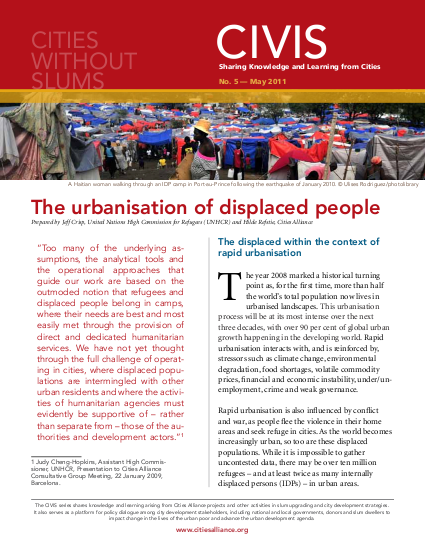
The year 2008 marked a historical turning point as, for the first time, more than half the world’s total population now lives in urbanised landscapes. This urbanisation process will be at its most intense over the next three decades, with over 90 per cent of global urban growth happening in the developing world. Rapid urbanisation interacts with, and is reinforced by, stressors such as climate change, environmental degradation, food shortages, volatile commodity prices, financial and economic instability, under/unemployment, crime and weak governance. Rapid urbanisation is also influenced by conflict and war, as people flee the violence in their home areas and seek refuge in cities. As the world becomes increasingly urban, so too are these displaced populations. While it is impossible to gather uncontested data, there may be over ten million refugees – and at least twice as many internally displaced persons (IDPs) – in urban areas.
Resource collections
- UN Habitat - Urban Response Collection
- Urban Response - Urban Crisis Preparedness and Risk Reduction
- Urban Response Collection - Community Engagement and Social Cohesion
- Urban Response Collection - Economic Recovery
- Urban Response Collection - Environment and Climate Change
- Urban Response Collection - Housing, Land and Property
- Urban Response Collection - Urban Crisis Response, Recovery and Reconstruction
- Urban Response Collection - Urban Resilience
